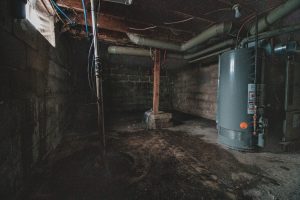 Most homes built before 1930 have basements. For Realtors and Appraisers, the existence of basements square footage is a bit of a conundrum. Should it be included in the square footage of the house? How valuable is it? Well, that depends…
Most homes built before 1930 have basements. For Realtors and Appraisers, the existence of basements square footage is a bit of a conundrum. Should it be included in the square footage of the house? How valuable is it? Well, that depends…
First, some history on basements. I learned this from my favorite home inspector. A century ago when building was really booming in Oregon, the builders were primarily folks who had learned their trade back East, or from someone who had come from back East. The East coast has much colder winters than the Pacific Northwest. A house constructed in a location with really cold winters has to have a foundation that is deep enough that it is below the freezing depth of the soil. If it isn’t deep enough, the soil will expand when it freezes which can lift and damage the house. So in the East basements serve the purpose of getting the footing of the foundation deep enough. Then in about 1940 or so, builders in Oregon realized that our more mild winters meant that the foundations did not have to be that deep. Thus construction practices changed and builders quit building houses with basements.
It’s important to note that basements were not built with the intention of being water tight. They were built to protect the house from harsh, cold winters.
 Now fast forward to today. When a house has a basement it is an asset to the property in that, even if leaky and unfinished, it is useful space. In a really bad basement storage can be elevated and it is a bit like a garage where you can put holiday decorations, paint, tools, stuff that you don’t need every day but want to keep around. Most basements are more than just a little bit useful and not all basements leak. Drainage systems can be installed and basements can be finished to be really great living areas.
Now fast forward to today. When a house has a basement it is an asset to the property in that, even if leaky and unfinished, it is useful space. In a really bad basement storage can be elevated and it is a bit like a garage where you can put holiday decorations, paint, tools, stuff that you don’t need every day but want to keep around. Most basements are more than just a little bit useful and not all basements leak. Drainage systems can be installed and basements can be finished to be really great living areas.
So how do you value a basement. It truly depends on how well it is finished. If completely unfinished, I calculate the value of the house itself, above the basement. Once I know the value per square foot of that space, I give the square footage in the basement half the value per square foot of what is above it. If it is really beautifully finished, I will give it just about the same value as what is above it. But to get that kind of value it truly has to be well done with appropriate finish work, lighting, and an egress (a way out other than the interior stairs to get out in the event of a fire).
When I first got my real estate license I did not include unfinished basement square footage in the advertised size of the house. But over the years I came to realize that other properties with unfinished basements were including that space. To not include it made my listings sound small. So I now include it but I also clearly state whether the basement is finished or not and that it is included in the square footage.
There you have it, a bit about basements. Thanks for reading,
Dianne
